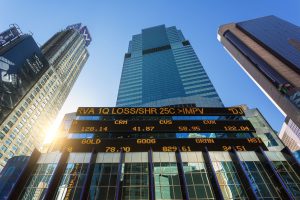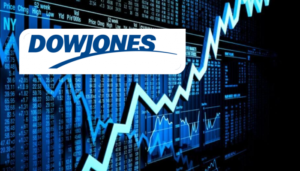Forever Quantitative Easing: Is it here to stay?
The term forever QE has just started to come into play recently, and mainstream media is most likely going to embrace this term and weaponise it in not so distant future. However, we first addressed this phenomenon back in in 2015 and here is the link that details what was said at that time.
The outlook has only worsened since then; the new tax breaks corporations got will be used to purchase more shares, and the reason is simple, it pays more in the short term to boost profits by reducing share count than in investing in the company. Corporations will continue down this path until new laws are enacted and they will become more emboldened with time. Gone are the days when there was a semblance of caring for the investor; insiders are only concerned with how much they can make, and they don’t care if they destroy the company in the process. Share buybacks are rising and have continued to grow since we first posted that article.
Forever Quantitative Easing Fuelling Buyback binge
Buybacks appear to be nearing a crescendo, with total U.S. stock repurchase announcements crossing the $1 trillion mark in mid-December for the first time, according to Michael Schoonover, the portfolio manager of the Catalyst Buyback Strategy fund (ticker: BUYIX). “There’s been a significant pickup in recent weeks,” with markets in a downdraft, he adds. Announcements reached $1.08 trillion, with nearly half concentrated in 19 companies, which account for $460 billion of the total. Some of those are listed in the nearby table. Despite the record-setting buyback authorization levels, 2018 has been an unusual year in that fewer companies are accounting for the total buybacks, he says.
Take this as an early warning that should the media jackasses start pushing another B.S story, instead of panicking, one should break out of a bottle of champagne, and as the masses panic calmly sip on that champagne and build a list of strong stocks one always wanted to purchase. For those allergic to work, the option is simple; sit back and relax, for we always view crash type events as opportune moments when the trend is positive. Market update Feb 28, 2019
Mass Media Fails To Account For Forever Quantitative Easing
The wise guys at the Mass Media outlets are already pushing a new narrative. This is how they incept new ideas into the masses; you create doubt and then let that doubt grow. For example, they are making all sorts of dire predictions about Brexit (some of which border on the preposterous), they keep focussing on the calamitous consequences the US will face if there is no trade deal with China, experts are emerging about the dangers of lower rates and an inverted yield curve, etc. Well, think of any garbage and add it to this list. For that is what these garbage collectors do, they collect waste and try to spin it off as something valuable.
Before the Brexit vote, the naysayers made a great deal of noise of how a “yes” vote would lead to total chaos. So, what happened to that chaotic scene they predicted? We are not taking sides but looking at trends and history, and history is replete with examples illustrating that when “fear” is used as a weapon, the ones to fear are the ones putting this weapon to use.
History also demonstrates that in general individuals favour freedom over serfdom. Independence can never lead to chaos unless you are impinging on another person’s sovereignty in the process. Whatever narrative the Media is pushing, it is usually the opposing narrative that is true. According to the experts, the world should have ended several times over, and the Dow should have crashed and never risen years ago.
Naysayers are always wrong in the long run
One theme running through all those gloomy predictions of doom is that those making those dire predictions are doomed to be wrong. Case and point, the dire predictions market experts have made since the market bottomed in 2009. Or the idiotic stance by politicians such AOC on Amazon opening a new Head Quarters in NYC. This plan would have increased Tax revenues significantly and provided 25K plus jobs. Sam Zell, had some choice words on this topic, that pithily summarises the Amazon fiasco. Observe the video, and you will get a laugh from it as this is another one of those hot mike events.
Whether Amazon is fair in the way it conducts its business operations is a separate story; in terms of trends, companies like Amazon need to stop some of their predatory practices or risk being suddenly upended. AI is gaining traction at a stunning rate, and it is going to help many small companies take on industry giants at a speed that will stun these dinosaurs. While experts state that it could AI years to compete with Humans; we feel a major announcement could be made within the next 18-39 months that will stun the world. If this announcement is made, then AI will be smarter than humans in less than 36 months from the date of that announcement.
Uncertainty is still running high
The masses are still uncertain, and we find uncertainty adorable; nothing is more bullish for the markets than an undecided crowd.
The best time to buy is when the masses are in panic mode, and when one feels far from certain about the future of the markets; certainty is the secret word for failure when it comes to the stock markets. Market Update Feb 28, 2019
What is striking is that over the past several weeks the number of individuals in the Neutral camp has hardly budged and is gently trending upwards. Since the last update, we have two sets of new readings. Last week the number of individuals in the neutral camp stood at 39, this week they increased to 41. So far in 2019, the number of individuals in the neutral camp has always surpassed those in the bullish or bearish camps, and this is very revealing. It clearly indicates that the masses are suffering from a long term bias and that the political landscape is messing with their ability to distinguish reality from fiction.
Until we have a feeding frenzy stage, this bull market will not end
While you might feel sorry for them, just watch Pluto’s allegory of the cave to see how well the masses will reward you for trying to wake them up. In a nutshell, this development is a very bullish factor for it means that eventually, this market is going to experience what could turn out to be an extreme “feeding frenzy stage”. The crowd will ultimately be so mad they sat and did nothing for so long, that they will double up on this market and their sweet reward as always will be a very sharp guillotine.
Masses will eventually embrace this bull
However, contrarian players will mistake the initial surge in bullishness as a sign that the markets are ready to top out and will end up shedding a lot of tears in the process. At the Tactical Investor, our strategy is different; we will not adopt a position that opposes the masses until the crowd is in a state of ecstasy, in other words, the bandwagon of joy should be ready to collapse before we consider betting against the masses. As the masses held off for so long, the buying climax could last for an extended period. Remember the equation must always balance. As we are quite far from the “feeding frenzy stage”, there is no point in wasting too much time on it. Suffice to say, this bull market is not ready to die.
This bull market is unlike any other; before 2009, one could have relied on extensive technical studies to more or less call the top of a market give or take a few months; after 2009, the game plan changed and 99% of these traders/experts failed to factor this into the equation. Technical analysis as a standalone tool would not work as well as did before 2009 and in many cases would lead to a faulty conclusion. Long story short, there are still too many people pessimistic (experts, your average Joes and everything in between) and until they start to embrace this market, most pullbacks ranging from mild to wild will falsely be mistaken for the big one. Market Update Feb 28, 2019
One should remember this paragraph every time the urge to panic starts to rise; no bull market has ever ended on a note of fear or anxiety. Despite the media trying to create a new narrative to prove otherwise for the past several years; they have failed miserably, showing that news, in general, should either be treated as rubbish or viewed through a humorous lens.
Conclusion
In terms of the stock market, until the Fed changes its mind, all sharp corrections have to be viewed as buying opportunities, and backbreaking corrections have to be placed in the category of “once in a lifetime events”, provided of course the trend is positive. That is what we are here for; to inform you if the trend is positive (Up) or negative (down). The world is going to witness a Fed that has decided to make a cocktail of Coke, Heroin, Crack and Meth and take it all in one shot. Imagine what a junkie on this combination of potent drugs is capable of doing, and you will have an idea of where the Fed is heading in the years to come. Market Update Feb 28, 2019
Courtesy of Tactical Investor
Random views on QE
Quantitative Easing definition?
Quantitative easing is an unconventional monetary policy in which a central bank purchases government securities or other securities from the market in order to increase the money supply and encourage lending and investment. When short-term interest rates are at or approaching zero, normal open market operations, which target interest rates, are no longer effective, so instead a central bank can target specified amounts of assets to purchase. Quantitative easing increases the money supply by purchasing assets with newly created bank reserves in order to provide banks with more liquidity.
KEY TAKEAWAYS
- Quantitative easing, or “QE,” is the name for a strategy that a central bank can use to increase the domestic money supply.
- QE is usually used when interest rates are already near 0 percent and can be focused on the purchase of government bonds from banks.
- QE programs were widely used following the 2008 financial crisis, although some central banks, like the Bank of Japan, had been using QE for several years prior to the financial crisis. Full Story
Quantitative Easing Explained
Quantitative easing is a massive expansion of the open market operations of a central bank. It’s used to stimulate the economy by making it easier for businesses to borrow money. The bank buys securities from its member banks to add liquidity to capital markets. This has the same effect as increasing the money supply. In return, the central bank issues credit to the banks’ reserves to buy the securities.
Where do central banks get the credit to purchase these assets? They simply create it out of thin air. Only central banks have this unique power. This is what people are referring to when they talk about the Federal Reserve “printing money.”
Lower interest rates allow banks to make more loans. Bank loans stimulate demand by giving businesses money to expand. They give shoppers credit to purchase more goods and services.By increasing the money supply, QE keeps the value of the country’s currency low. This makes the country’s stocks more attractive to foreign investors. It also makes exports cheaper.
Japan was the first to use QE from 2001 to 2006. It restarted in 2012, with the election of Shinzo Abe as Prime Minister. He promised reforms for Japan’s economy with his three-arrow program, “Abenomics.”
The U.S. Federal Reserve undertook the most successful QE effort. It added almost $2 trillion to the money supply. That’s the largest expansion from any economic stimulus program in history. Full Story
Why do we need quantitative easing?
The aim of QE is simple: by creating this ‘new’ money, we aim to boost spending and investment in the economy.
We are tasked with keeping inflation – rises in the prices of goods and services – low and stable.The normal way we meet our inflation target is by changing Bank Rate, a key interest rate in the economy.
When the global recession took hold in late 2008, we quickly lowered Bank Rate from 5% to 0.5% to support the UK’s economic recovery. Lower interest rates mean it’s cheaper for households and businesses to borrow money – which encourages them to spend and invest, whether that’s a family buying a new car or a company wanting to build a new factory.
But there’s a limit to how low interest rates can go. So when we needed to act to boost the economy, we turned to another method of doing so: we introduced quantitative easing. Full Story
Other Articles of Interest

Sophistication in Sentiments: The Stock Market Emotions Chart Explained

The Artful Approach to Winning the Stock Market Game

The Permabear Predicament: A Ballet of Bearish Beliefs

Harnessing Power: The Dynamic Approach of Small Dogs Of the Dow

Psychology Unveiled: Exploring the Depths of the Human Mind

Stock Portfolio Tracker

What happens if the stock market crashes?

Achieving Financial Goals with Intelligent Investing Strategies

Uranium Futures price chart

Stock market performance 2019

Quantitative Easing Definition

Stock Market Update

Stock Market Quotes and Sayings

US Dow Jones Outlook

Dow Jones predictions: Next Target Dow 30k?


